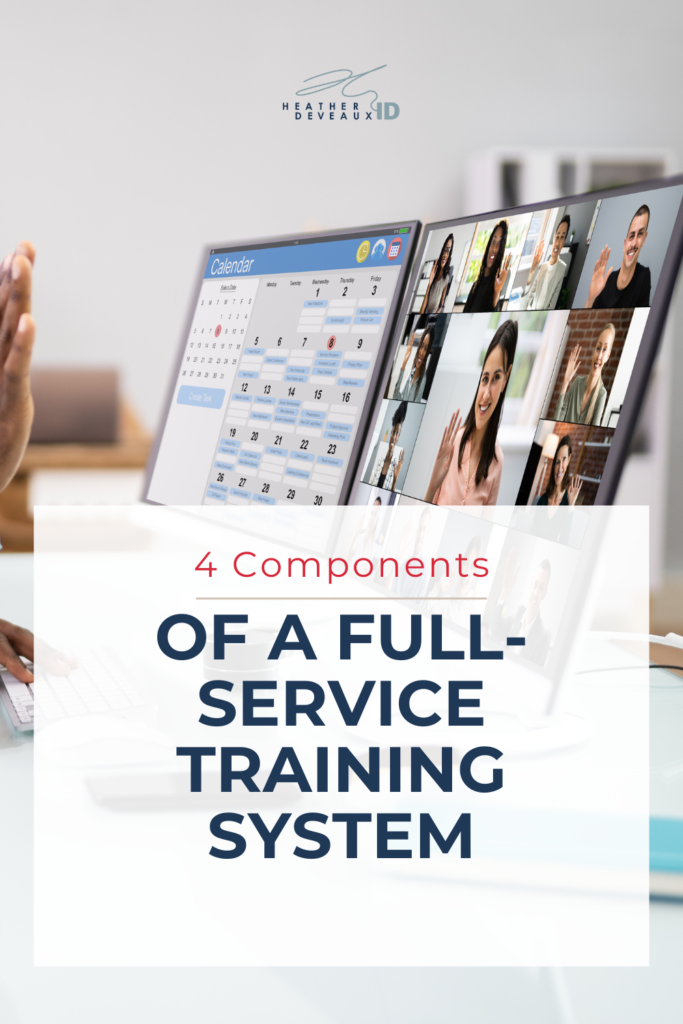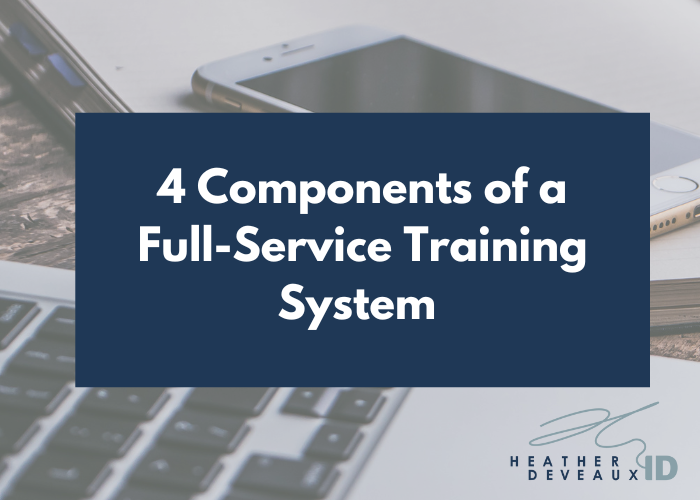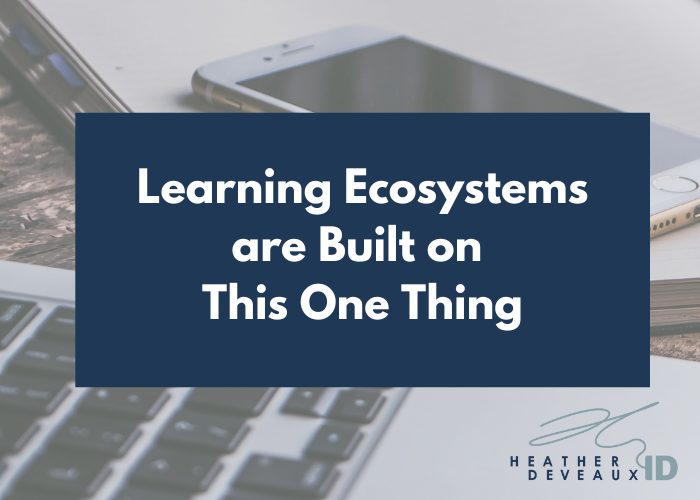4 Things You Need to Deliver Full-Service Training
Full-service training requires a holistic, multi-faceted approach to learning and development. But you don’t have to create it alone.
If you’ve been tasked with overseeing your organization’s learning and development (L&D) initiatives, you’re familiar with the pressure to create streamlined, impactful training programs. There are multiple stakeholders to consider, outcomes to deliver upon, and of course, you need to ensure that you engage learners, improve performance, and ultimately drive business growth. Easier said than done, right? That’s why you’re here.
The fast-paced demands of today’s business world can make it feel like you’re constantly juggling too many balls at once—meeting deadlines, managing resources, aligning training with business goals—all while ensuring that learners have access to the right training opportunities at the right time. It’s easy to feel overwhelmed, especially when your current training solutions seem disjointed, disconnected, and not delivering the results you need.
A powerful solution and approach to overcoming training issues is full-scale learning ecosystem—a comprehensive and integrated approach to training and education. But what does this really mean, and how can it solve the issues together?
What is a Full-Scale Learning Ecosystem?
A full-scale learning ecosystem or full-service training system goes beyond isolated training sessions and one-off programs. It’s a holistic framework that addresses every aspect of learning and development within your organization, connecting learners, technology, content, and business goals in one cohesive system.
Rather than relying on ad-hoc, patchwork solutions, duct-taped solutions, a full-service training system uses a variety of learning solutions, resources, and technologies to ensure that learning is not only effective but also scalable and sustainable.
Common Struggles You Might Be Facing—and How a Full-Scale Learning Ecosystem Solves Them:
1. Fragmented Learning Programs
You might be struggling with trying to coordinate multiple training efforts across different teams, departments, or technologies. This often results in fragmented programs that lack cohesion, making it difficult to track progress or see a clear impact on performance.
The Solution: A full-scale learning ecosystem integrates all your training programs under one roof. With a centralized learning platform, you can manage everything in one place—courses, assessments, feedback—ensuring consistency and easy tracking of employee development.
2. Low Engagement and Retention
Many project managers face challenges around employee engagement. Learners may be struggling to connect with the material, or worse, forgetting what they’ve learned soon after training sessions are completed. Traditional training approaches are often too rigid or generic, failing to meet individual learner needs.
The Solution: Learning ecosystems offer personalized learning paths that cater to individual roles, skills, and career trajectories. Learners are no longer forced into one-size-fits-all training; instead, they can follow a customized path that makes training more relevant and engaging.
3. Difficulty Proving ROI
How often have you been asked to show the tangible benefits of your training programs, only to struggle with data that doesn’t paint the full picture? Proving the return on investment (ROI) of training initiatives can be a major pain point, especially when tracking results is difficult or when data is scattered across different platforms.
The Solution: A well-implemented learning ecosystem comes with robust reporting and analytics tools, allowing you to measure the effectiveness of your training programs in real time. By gathering data on learner progress, engagement, and outcomes, you can present clear, evidence-backed results to leadership.
4. Lack of Continuous Improvement
Even the best training programs need updating to keep pace with evolving business needs. But when learning systems are siloed or disconnected, making changes is time-consuming, costly, and often ineffective. I’ve seen clients work on one course update at a time and then have to go back and update other courses because they didn’t take a holistic approach to the learning paths they designed.
We’re busy people. It’s hard to make time to create a full-scale picture of learning success. Especially when you just need to get your course out the door. Non-profit organizations often struggle with finding the balance between delivering outcomes and spending training dollars allocated to deliver programs. It can be frustrating to want to do more but feel limited by the systems you’re using. You’re not alone in that frustration, but I know that doesn’t make it any easier.
The Solution: One of the key advantages of a full-scale learning ecosystem is its built-in ongoing support and evaluation. This ensures that training materials are always up-to-date and aligned with your organizational goals. Continuous assessment and feedback loops allow for regular adjustments, ensuring long-term success.

4 Key Components of Full-Service Training
To better understand how a learning ecosystem and full-service training solutions can solve these challenges, let’s break down the 4 essential components:
- Needs Assessment: Before implementing any training solution, you need a deep understanding of your organization’s goals and learner needs. A thorough needs assessment ensures that the ecosystem is aligned with your overall business strategy.
- Integrated Learning Platforms: A full-scale learning ecosystem connects all your learning technologies into a centralized system. This integration allows for easier management, delivery, and tracking of training across the organization.
- Personalized Learning Paths: Learners are empowered with customized learning experiences that cater to their specific roles, skills, and aspirations. This improves engagement and ensures that learners get exactly what they need to succeed.
- Ongoing Support and Evaluation: The best ecosystems aren’t static. Continuous feedback and support allow for regular updates and improvements, ensuring that the training remains relevant, effective, and aligned with evolving business needs.
Building a Full-Service Training System
At Heather Deveaux Instructional Design, we understand the complexities of managing learning and development initiatives. That’s why we specialize in designing and implementing full-service training systems that address the unique needs of your organization. Whether you’re struggling with low engagement, fragmented training programs, or difficulty proving ROI, we’re here to provide a solution that works.
By combining cutting-edge technologies with personalized learning pathways and ongoing support, we’ll help you create an integrated learning environment that empowers your learners and drives meaningful results for your organization. No more duct-taping your training programs together. It’s time for a system that actually works. Book a call with me today.






